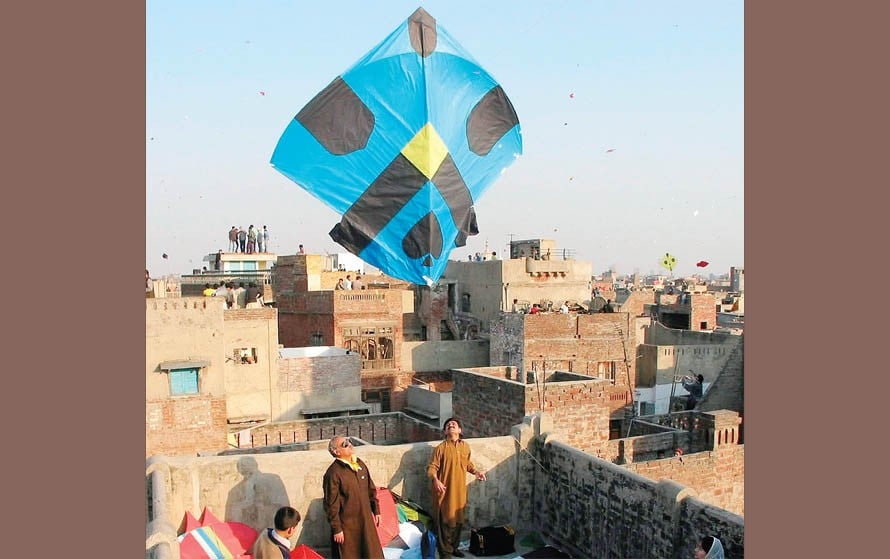
Would kiteflying be forever assigned to memory, in the hearts of the lovers of the sport?

"Ustad jee, when will I get to do pecha?" Shakeel Butt recalls asking his senior, aka Ustad Billu, who was moving his hands rapidly in a particular, rhythmic fashion trying to balance the kite in the air. Butt, on the other hand, was holding the charkhi (spool).
As a reply, Butt received a smack on his head.
Ustad Billu is now dead, but Butt still remembers him fondly as "my mentor [in kiteflying]." Those were the days, not too long ago, that he says he cannot forget. "It wasn’t just about flying your kite and trying to intercept your opponent’s kite midair and also possibly cut it, or sometimes fall prey to a king-size monster. It’s a complete sport."
Butt, a resident of Prem Gali, in Gawalmandi’s neighbourhood, says that he indulged in kiteflying from a very early age: "I would sneak out of my house, avoiding my father’s watchful stare, and would climb to the rooftop and spend the entire day, which was usually a holiday. I’d watch kites of different colours and sizes dancing in the skies.
"Like any other sport, it [kiteflying] requires practice in order to achieve a level of skill," he says, reflectively. In this, he was helped by Ustad Billu, a neighbour.
"Listening to your master’s voice is the first rule in any game. Ustad jee would tell me that a patang baaz [kiteflyer] needs to read the mind of his opponent through the movement of his kite in the air."
Butt quit the game, years later, when his young son unfortunately fell from the rooftop while chasing a kite and succumbed to injuries.
The story, though very sad, highlights some important aspects of our culture and traditions, which we have lost to modern innovations, self projection, current business practices and urbanisation.
Khurshid Butt, a middle-aged resident of Androon Mochi Gate, learnt to fly kites from his grandfather who was a kite-maker and had introduced several designs and forms of patang back in the day. "Me and my grandfather would prepare manjha (dor-making material) to be applied on kite strings which was made with eggs, white flour, dyes, and powdered glass," he says, adding that manjha was too dangerous and considered to be "foul play."
As Basant day approached, inside the Old City the people would routinely prepare their strings themselves, he recalls. "The activity connected all neighbours who would discuss their problems and issues while preparing the kite strings."
Khawaja Irfan, another regular kiteflyer in the 2000s, hails from the area close to the Pani Wala Talab. He says, "My father always advised me to not lose my cool while playing the game."
For Awais Kamran, a resident of Kapurthala House, Anarkali, his childhood was about chasing kites that strayed into the streets. "It was so much fun," he recalls, animatedly. "It also gave us a sense of being free. It was so liberating!"
Kamran’s father would fly kites every Friday, which was a weekly holiday back then. "I’d watch him fight the battles in the air, while our extended family members would join us on the rooftop. They’d snack on peanuts and oranges."
"It was such a joy to make your own kite, and then see it rise in the air," says Iftikhar Butt, a native of Walled City, now based in Township. He says he was not a professional kite and string maker but used to prepare his own gadgets to satisfy his craving. "Designing kites is creativity, it relaxes the mind," he says. "It’s the job of an artist."
On the other hand, though kiteflying is banned in Punjab, several people are openly selling all types of kite and strings, including chemical string, iron-coated strings and every size of patang and gudda on facebook pages. They also have home-delivery facility all over the country. This activity raises a question mark over the performance of cyber crime authorities, especially police and Federal Investigation Agency (FIA). If the government is serious in reviving this colourful festival of Basant, it should take serious steps to curb such practices, which may cause damage/danger to life and property of citizens.